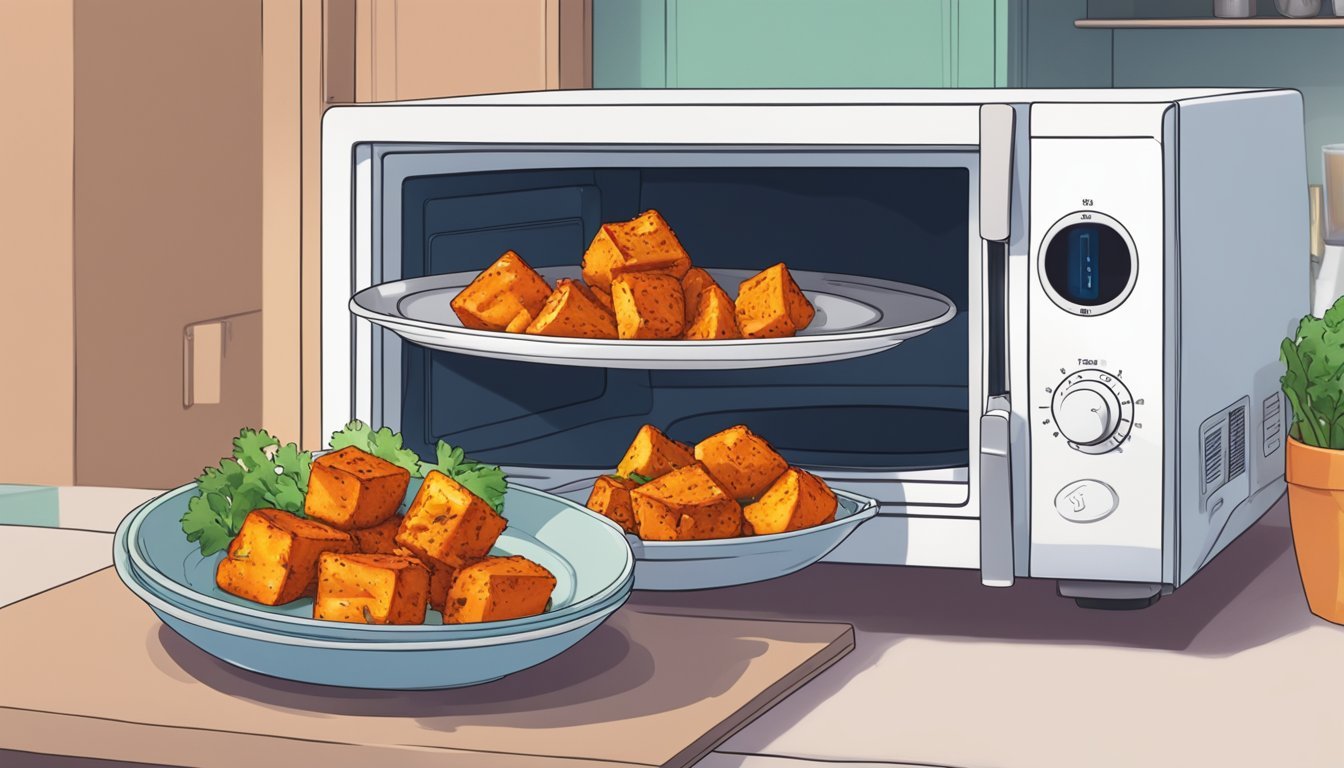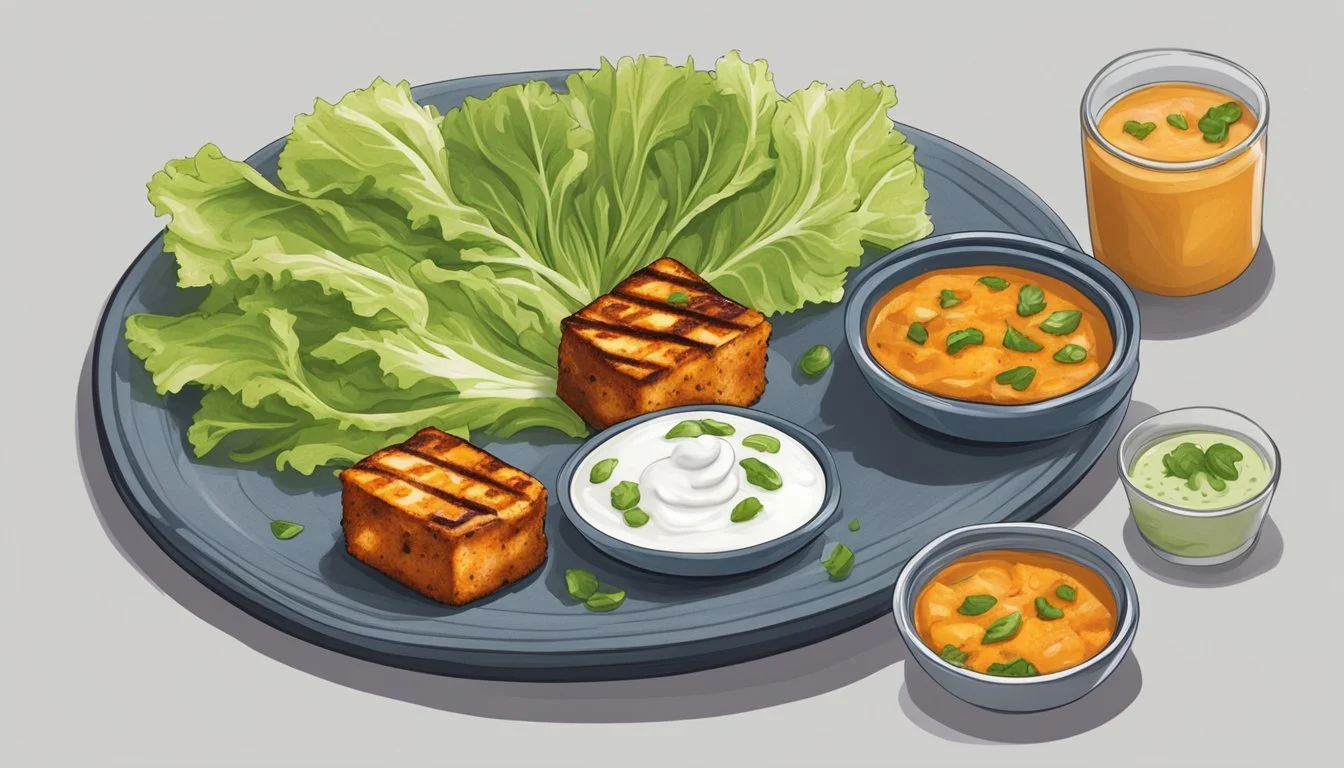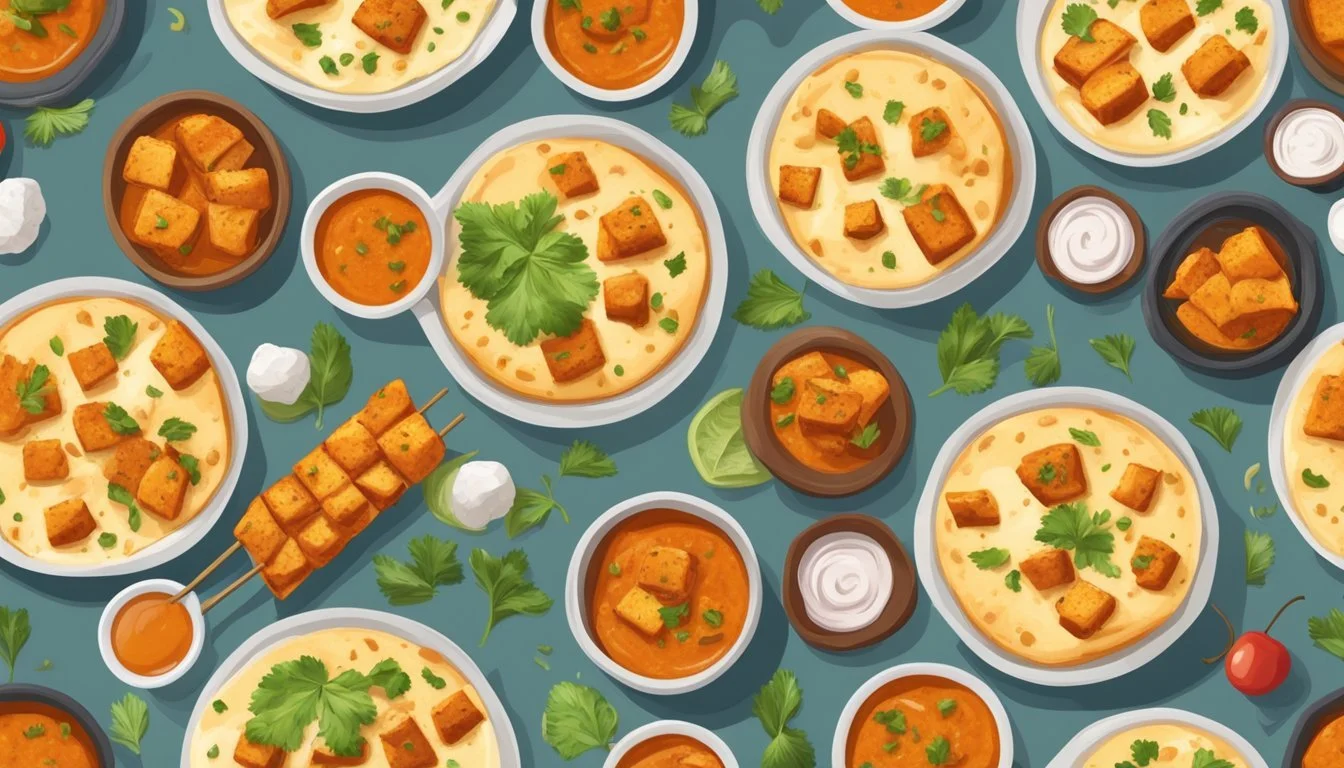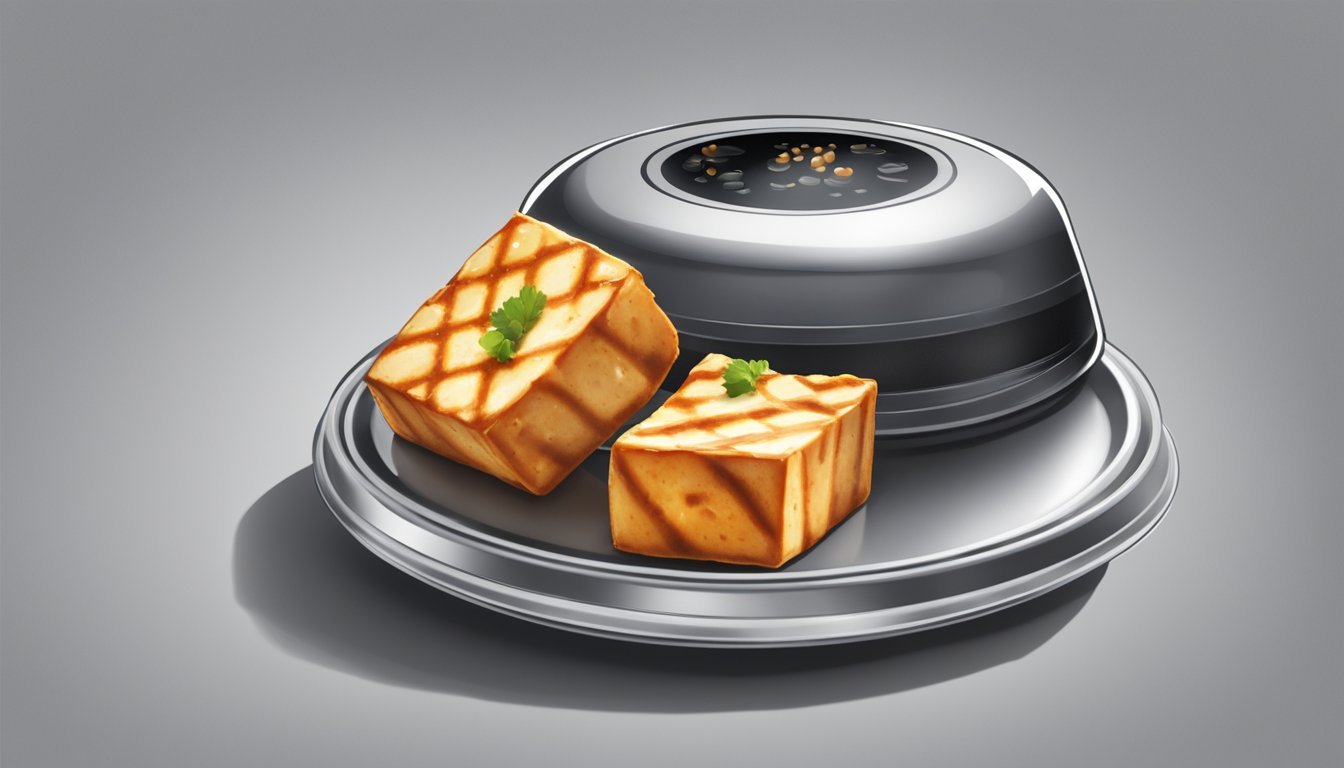Best Way to Reheat Paneer Tikka
Tips for Soft Cheese and Flavorful Marinade
Paneer tikka, a popular Indian appetizer made from chunks of paneer marinated in spices and grilled, is often enjoyed for its tender texture and rich, smoky flavor. However, when it comes to reheating leftovers, achieving that freshly-cooked taste can be challenging. The key to a satisfying paneer tikka experience even after refrigeration lies in how one reheats the dish without compromising the softness of the cheese and the potency of the spice-infused marinade.
Traditional methods of reheating might not work well for paneer tikka as they can either make the cheese rubbery or cause the marinade to dry out, losing the essential moisture that contributes to its flavor. Utilizing the right technique ensures that each piece of paneer remains succulent and that the spices remain as vibrant and aromatic as when first prepared. This involves striking a balance between temperature, time, and the reheating medium itself to preserve the integrity of this beloved dish.
Essentials of Paneer Tikka
Paneer tikka is a beloved Indian dish known for its rich spices and tangy marinade. This section elaborates on what constitutes an authentic paneer tikka, the selection of quality ingredients, and the process of creating the perfect marinade for this delightful dish.
Understanding Paneer Tikka
Paneer tikka is a delectable appetizer where chunks of paneer, a type of Indian cottage cheese, are marinated in spices and then grilled to perfection. At its core, paneer tikka is characterized by its smoky flavor and tender texture, often accompanied by diced onions, bell peppers (What wine goes well with bell peppers?), and a variety of accompaniments. When prepared correctly, the dish should exhibit a slight char on the edges with a soft and juicy center.
Selecting the Right Ingredients
The selection of prime ingredients is critical for achieving authentic flavors in paneer tikka. Freshness is paramount, with the main component being paneer that is firm yet has the capability to absorb the marinade. Vegetables such as onions and bell peppers act as complementary items that provide a crunchy contrast to the soft cheese.
Paneer: Should be fresh and firm.
Vegetables: Typically includes onions and bell peppers, cut into chunks.
Spices: A range of spices, including garam masala, turmeric, and Kashmiri red chili powder, are used to infuse the dish with its distinctive flavor.
Ingredients should be sourced carefully to ensure each bite of paneer tikka is imbued with the intended taste profile.
Preparing the Tikka Marinade
The marination process is where paneer tikka gains most of its flavor and succulence. A well-crafted marinade typically involves a base of yogurt, known as hung curd, which is thick and creamy, acting as an ideal tenderizer for the paneer. Various spices and seasonings are then added to this base to create a rich, flavorful coating.
Yogurt (Hung Curd): Acts as a base for the marinade.
Spices: Include garam masala, ginger, garlic, Kashmiri chili powder, turmeric, and others.
Additional Seasonings: Lemon juice for tartness, besan or gram flour for binding the marinade, and specific masalas according to taste preferences.
The paneer and vegetables are coated in this marinade and left to rest, allowing the flavors to meld and penetrate the ingredients deeply before the cooking process begins.
Cooking Techniques
The best way to reheat Paneer Tikka involves choosing the right cooking technique to maintain the cheese's soft texture and the marinade's rich flavor. Whether using a grill, oven, or stovetop, each method has distinct advantages.
Grilling Paneer Tikka
Grilling allows one to mimic the flavor and texture of a traditional tandoor. It is ideal for achieving the slightly charred edges and smokiness of Paneer Tikka. One can use a barbecue or a grill pan for this method.
Preheat the grill to a medium-high temperature.
Place the Paneer Tikka on the grill and heat for 1-2 minutes on each side or until it's warmed through.
Using the Oven
Oven heating ensures even warming while preserving the Paneer Tikka's moisture.
Bake:
Preheat the oven to 350°F (175°C).
Distribute the paneer evenly on a baking sheet lined with parchment paper.
Bake for 10-12 minutes until properly heated.
Broil (for a charred effect):
After baking, broil on high for 2 minutes for slight charring.
Stovetop Method
Heating on the stovetop can quickly reheat Paneer Tikka. A heavy-bottomed pan is preferable for even heat distribution without burning.
On a pan:
Heat a skillet on medium heat with a little bit of oil to prevent sticking.
Place the paneer onto the skillet and heat for 1-2 minutes per side.
In sauce:
If Paneer Tikka is in a gravy, gently heat the dish on low heat, stirring occasionally until it is sufficiently warm.
By following these specific methods, one ensures their Paneer Tikka retains the desired textures and flavors inherent to the dish.
Reheating Methods
Proper reheating technique can ensure that paneer tikka leftovers are warmed through while maintaining a soft texture and aromatic flavor. This section outlines the best methods to achieve that.
General Reheating Tips
Time & Temperature: One should always be mindful of reheating times and temperatures to preserve the dish's quality.
Texture Maintenance: To prevent the paneer from becoming rubbery, gentle heating is crucial.
Oven Reheating
Setup: Preheat the oven to 350°F (175°C) and arrange the paneer tikka on a baking sheet lined with parchment paper.
Process: Bake for 10-12 minutes until the paneer is heated adequately and the edges might turn slightly golden.
Stovetop Reheating
Low Heat: Reheat paneer tikka on low-medium heat in a pan to avoid overcooking and losing the marinade's flavor.
Monitoring: Frequent flipping ensures even reheating without drying out the paneer.
Microwave Reheating
Short Intervals: Use short blasts in the microwave, covered, stirring in between to distribute heat evenly.
Attention: Careful attention is needed to avoid overheating, which can quickly lead to a rubbery texture.
Serving and Accompaniments
Paneer tikka shines when served with the right accompaniments, enhancing the dish's flavors and presentation. The following selections are tailored to complement its taste profile.
Pairing with Sides
Paneer tikka pairs exceptionally well with carbohydrate-based sides that act as a vessel to enjoy the flavorful marinade. Here are some specific pairings:
Rice: Basmati or jeera rice serve as a neutral base that allows the spices of the paneer tikka to stand out.
Naan: A warm, buttered naan not only complements the paneer’s texture but also helps in scooping up any delicious leftover marinade.
Salad: A simple salad with crunchy vegetables provides a refreshing contrast to the savory tikka.
Garnishing and Presentation
For garnishing and enhancing the visual appeal of paneer tikka, use:
Chutneys: Both mint chutney and tamarind chutney deliver a tangy kick that balances the rich flavors of the paneer.
Lemon Wedges: Squeezing fresh lemon juice over the paneer tikka can add a zesty freshness that cuts through the creaminess.
Cilantro: Finely chopped, it imparts a fresh herbal note that pairs well with the tangy and spicy elements of the dish.
Appetizing presentation is key—arrange the paneer on a platter, alongside the chutney, lemon wedges, and naan bread to allow guests to assemble bites according to their preference.
Variations and Dietary Considerations
Paneer Tikka, a popular Indian dish, can be adapted in various ways to suit different dietary needs and preferences while still maintaining its exotic flavors. The key to a successful adaptation is to ensure substitutes align with the dish's fundamental taste profile and texture.
Paneer Tikka Variants
Tofu Tikka: For a vegan alternative to traditional paneer tikka, tofu can be used as a plant-based protein. It perfectly absorbs the spices and yogurt-based marinade.
Vegetable Tikka: Vegetarians and vegans may also include a variety of vegetables such as baby corn, mushrooms, and bell peppers to enhance the dish's nutritional profile and add textural contrast.
Alternative Dietary Options
Low-Fat Ingredients: Individuals watching their calorie intake might opt for low-fat or fat-free Greek yogurt for the marinade.
Additional Protein: To up the protein content, one could add chunks of seitan (What wine goes well with seitan?) or extra-firm tofu in place of paneer for those adhering to a vegan diet.
Additional Information
When considering the best approach to reheating paneer tikka, it is important to ponder over homemade versus store-bought paneer, their nutritional content, and preservation techniques. Each factor plays a crucial role in maintaining the softness of the cheese and the vibrancy of the marinade.
Homemade versus Store-Bought Paneer
Homemade paneer is typically fresher and may have a softer texture compared to store-bought paneer. Individuals who prepare paneer at home can regulate the firmness by adjusting the pressing time and the type of milk used. For example, full-fat milk yields a creamier paneer suited for tandoori paneer tikka, where the marinade needs to permeate the cheese.
On the other hand, store-bought paneer might contain preservatives and be denser, which can affect reheating outcomes, potentially resulting in a firmer texture. However, the convenience of store-bought options is a considerable advantage for those with less time to prepare dishes like paneer tikka.
Nutritional Values
Paneer Tikka is not only beloved for its taste but also offers nutritional benefits. The calorie content differs between homemade and store-bought paneer due to variations in milk sources and additional ingredients. On average, a 100-gram serving of paneer may contain:
Calories Protein Fat Homemade Paneer 265 20 g 20 g Store-bought Paneer 292 18 g 24 g
These figures are approximate and can vary. Homemade versions might be lower in fat and calories, which is something health-conscious individuals might prefer.
Preservation Tips
Proper preservation of paneer tikka can extend its freshness and maintain its quality for reheating. If the paneer tikka was not consumed immediately and needs to be stored, consider the following:
Keep in an airtight container to prevent the paneer from drying out.
Refrigerate promptly; paneer tikka should not be left at room temperature for more than two hours.
For the best flavor and texture, consume refrigerated paneer tikka within 2-3 days.
Understanding these nuances helps ensure that when the time comes to reheat, the paneer tikka will be as close to its original state as possible.
Recipe Card
To reheat paneer tikka effectively, one should follow these instructions to maintain the softness of the cheese and the robustness of the marinade:
Ingredients:
Leftover paneer tikka
Parchment paper (optional)
Instructions:
Preheat the Oven: Set the oven to 350°F (175°C).
Prepare the Paneer: Arrange the paneer tikka pieces on a baking sheet. For easy cleanup, one may line the sheet with parchment paper.
Bake: Place the baking sheet in the oven and heat for 10-12 minutes. Watch for the edges to become slightly crisp and the cheese to soften.
Cool and Serve: Remove the paneer tikka from the oven and allow it to rest for a few minutes before serving.
Pro Tips:
Even Heating: Turn the paneer tikka halfway through the baking time to ensure even heating.
Moisture Retention: If the paneer tikka seems dry, consider lightly brushing it with oil before reheating to preserve moisture.
Serving Suggestion: Serve the reheated paneer tikka with a side of mint-coriander chutney or your favorite dipping sauce.
This method ensures that the paneer retains its texture and the marinade stays flavorful, providing a near-fresh dining experience.






